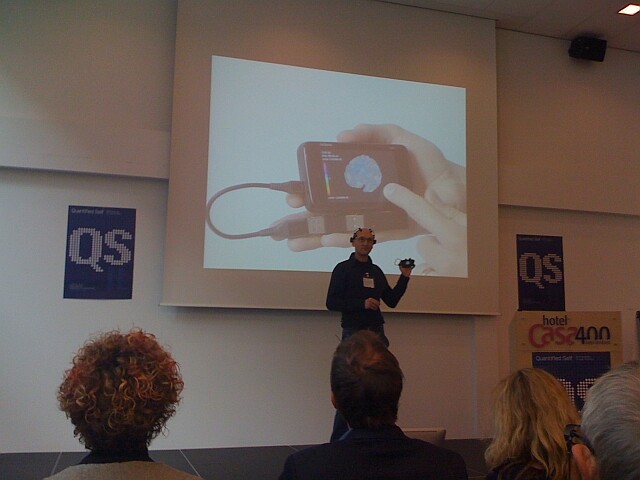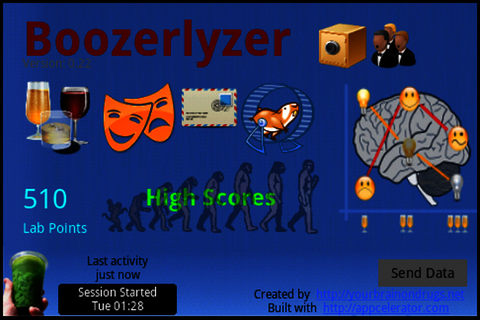The first Quantified Self Europe conference was held in Amsterdam on Saturday and Sunday Nov. 26-27 and Withings took this opportunity to meet with this community that has been very supportive of our products and our philosophy since the founding of the company. It was also the perfect occasion to present for the first time a nice infographic we had been working on.
Quantified Self conferences are organized in an unusual way. Aside from the regular talks and presentations, there are also times set apart for more original forms of speeches. During the “ignite sessions” for example, speakers have five minutes to discuss the topic of their choice but have little control over their Powerpoint presentation: it must be 20 slides long and each slide will be displayed for 15 seconds, making it sometimes a race to catch up for the speaker, but ensuring that all presentation will be short and dynamic.
Among those presentations, perhaps the most memorable was “My experience with a smartphone brainscanner” where Jakob Larsen demonstrated a portable brainscanner and its companion application that enabled users to visualize their brain activity in real time.

In a different field of science, but no less original, we also saw a presentation of Boozerlyzer, an application that allows you to track your alcohol consumption and estimate how drunk you are through a series of simple questions. The app is not designed to tell you whether you should drive or not, for example, but rather helps you track how a certain number of drinks will incapacitate you in some ways, affect your mood or your intelligence, etc. Boozerlyzer is developed by Yourbrainsondrugs.net, a community of scientists who study the effects of recreational drug use.

As for myself, I was invited to speak for Withings during a session dedicated to “toolmakers”, alongside Rajiv Mehta from Bagheera, developer of the Tonic Self-care app and co-organizer of the conference, Joost Plattel, a freelance developer very active in the field of Quantified Self who most recently developed an application to help people track the use of their subway card in Amsterdam, and Denis Harscoat, developer of the social self-tracking platform “Did This!”.
I took this opportunity to unveil a document we had been working on for a few weeks: an infographic that shows some information found by analyzing the anonymous data that Withings devices have been collecting for two years now, some of them “serious” findings and other more light-hearted. You can see this infographic below. It is also available with kilograms instead of pounds (here and here) and will be posted soon for download in PDF format on our website.
Let us know what you think of these findings! Is there any other information you’d like to see in such an infographic?
![]()
![]()


